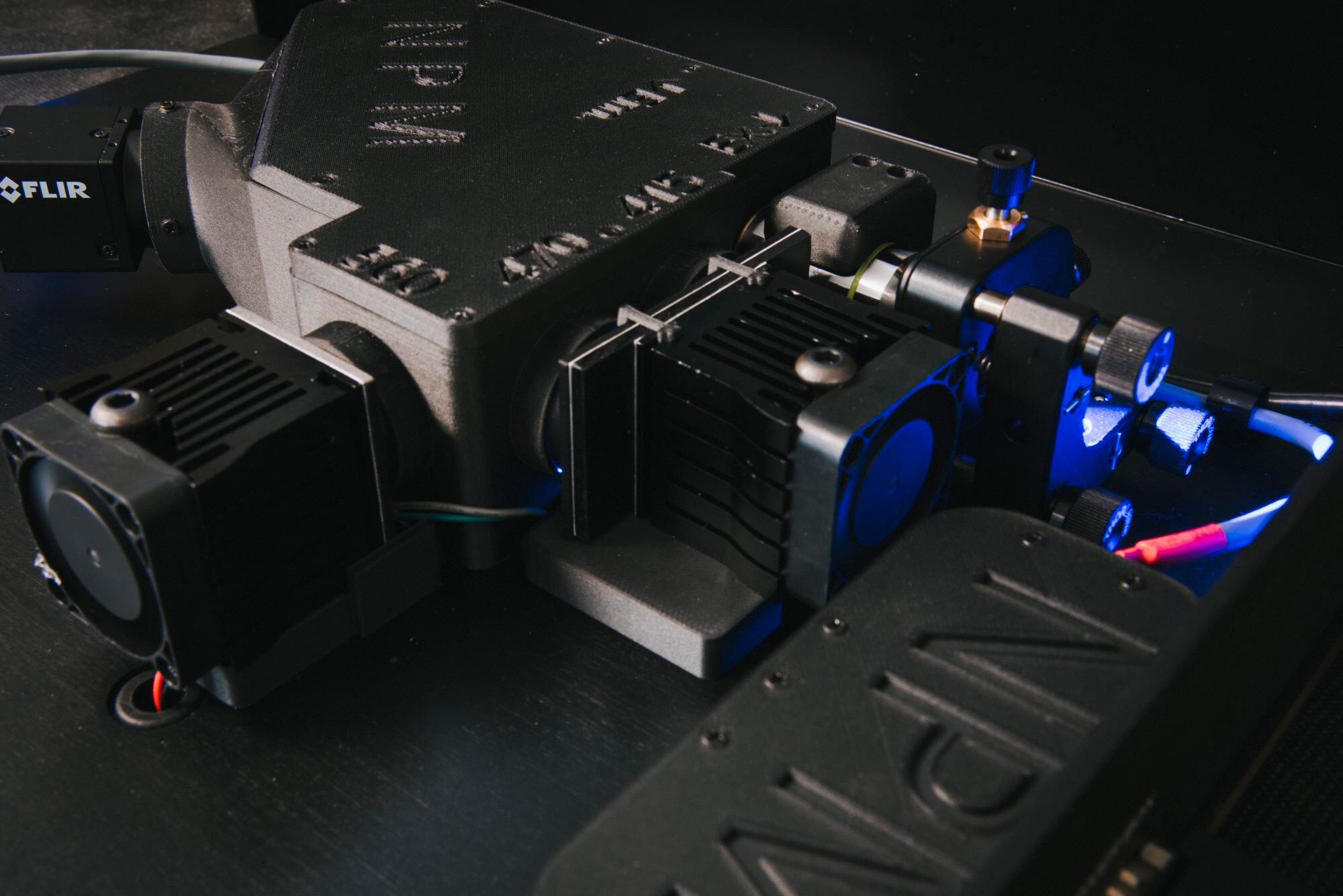
How to Cleave Fibers
After deciding on an experimental paradigm, you will need to cleave your fibers to reach your brain region(s) of interest. It is vital that the fiber is cleaved properly, as fiber photometry employs very low levels of light. Proper fiber cleaving ensures maximum light transmission.
In order to cleave your fibers, you will need a scribe. We recommend getting them from Specialized Products. The ruby and carbide versions both work well. We also recommend using a ferrule jig when cleaving fibers. We 3D print the ferrule jigs in-house to help standardize the fiber cleaving process; if you have ordered a system from us, you likely received one with your system. They allow you to cut fibers in 0.5 mm increments from 2 mm to 10 mm. The jigs eliminate the need for rulers and leave you with a perfectly cleaved fiber, ready for implantation.
Fibers purchased from Neurophotometrics are 10 mm long and will need to be cleaved to size dictated by your experimental needs. We recommend cleaving fibers to the same length (or slightly longer) than the dorsal-ventral coordinate for your target region. For fiber photometry experiments, it is very important that the fiber is implanted at the same coordinates as the viral injection site. This differs from optogenetics, where the fiber is usually implanted ~200um above the injection site. We are working with considerably lower levels of light in fiber photometry, so it is important that the fiber is directly implanted in the brain area you are recording from.
It is imperative that fibers are flat and polished at the tip. Jagged, irregular, or slanted tips will diminish light transmission efficiency and attenuate signal. Using scissors or chopping all the way through the fiber will result in a fractured core. A clean and symmetrical cut allows for fluorescent signals in the nW range to be picked up by your fiber photometry system.
To cleave a fiber with a ferrule jig:
Place the fiber in the well of the ferrule jig that corresponds to your desired fiber length and ensure that the ferrule is fully seated.
Holding the bottom of the ferrule in place with one finger, lightly score ONE side of the fiber using the scribe. The pressure applied should be light enough that the fiber does not snap off, but firm enough to push it up against the side of the well.
Flick the excess fiber off gently with your finger.
Check the efficiency of the fiber using a power meter to ensure it is about 80%. This can be accomplished by taking a power measurement out of the patch cord with the fiber attached and dividing it by the power coming out of just the patch cord (sans fiber and mating sleeve). If it is slightly below this threshold (3-4%), you may lightly polish the fiber by rubbing it gently on polishing paper placed on a rubber pad.
While the instructions above include the use of a ferrule jig, you can still cleave a fiber without one. Using the same scribe, tape the ferrule to a ruler and carefully score one side of the fiber and flick off the excess. All rules still apply — make sure to use gentle pressure and try not to chop all the way through the fiber.
If you prefer not to cleave your own fibers, we accept orders for custom lengths.

